Part 3: Carbon black, red earth,
and hyperspectral imaging
Carbon black and red earth
Carbon black is considered the most commonly used black ink in antiquity and the preferred ink when applied on a papyrus substrate. Essentially, carbon black ink is made of fine amorphous carbon particles dispersed in water with the help of a binding medium.
The most commonly used binding medium for ink production is gum Arabic, a natural gum produced from the trees of the Acacia species.
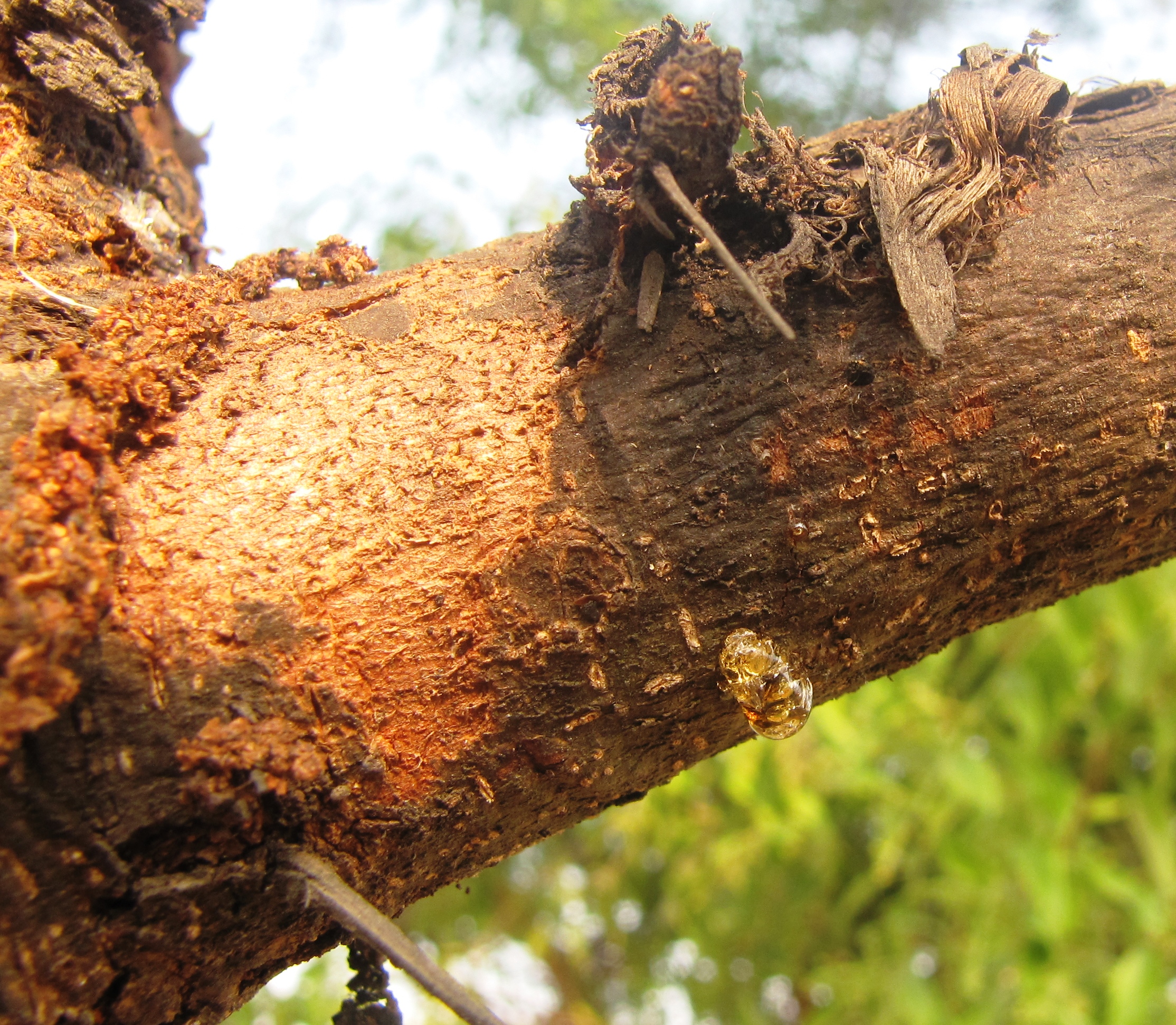
Even though carbon black is today considered a widely available and relatively cheap colourant, this does not seem to be the case in antiquity. Several starting materials were used to create the valuable ink (or pigment) known in Latin as atramentum, including wood, fruits, resins, and bones. The process of pyrolysis to produce amorphous carbon particles was not considered trivial and according to literary sources, specialised workshops were organised for this purpose, as described by Vitruvius (De arch. 7.10):
“A vaulted apartment is built like a sweating chamber, and is covered carefully with a marble facing and smoothed down. In front of it a small furnace is built with outlets into the chamber, and the mouth of the furnace is carefully enclosed so that the flame does not escape. Resin is placed in the furnace. Now the fiery potency burns it and compels it to emit soot through the outlets into the chamber. The soot clings round the walls and vaulting of the chamber. It is then collected and in part compounded with gum and worked up for the use of writing ink; the rest is mixed with size and used by fresco-painters for colouring walls.“
Vitruvius, On Architecture, Book 7, Chapter 10 (translated by F. Granger).
Ingredients for carbon black ink
- 5 g lamp black
(Kremer Pigmente, n. 47250) - 5 g untreated gum arabic
(Kremer Pigmente, n. 63300) - 30 mL distilled water
For the production of our carbon black ink, we used commercially available lamp black since we could not at this stage experiment with pyrolysis.
We worked with whole, untreated lumps of gum arabic to experience the process of grinding, taking turns until we got the desired result.


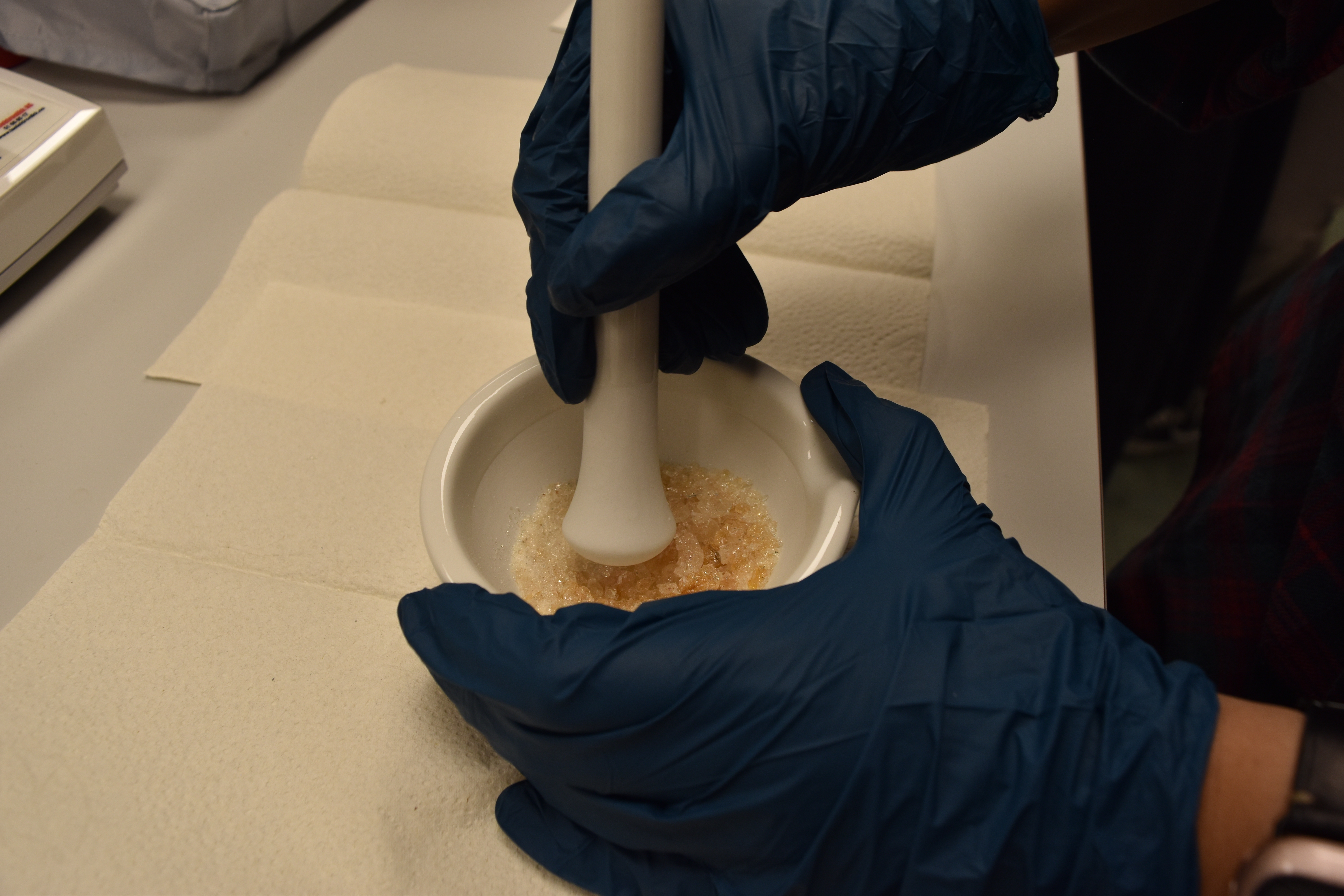

The grinding process was not particularly demanding and in about 10 minutes we were satisfied with the results.
We worked with a larger quantity than what was required for our recipe, starting with 25 g of gum which we dissolved in 150 mL of lukewarm distilled water. The dissolution of the powdered gum in water with the aid of a hotplate was a relatively easy and fast process.
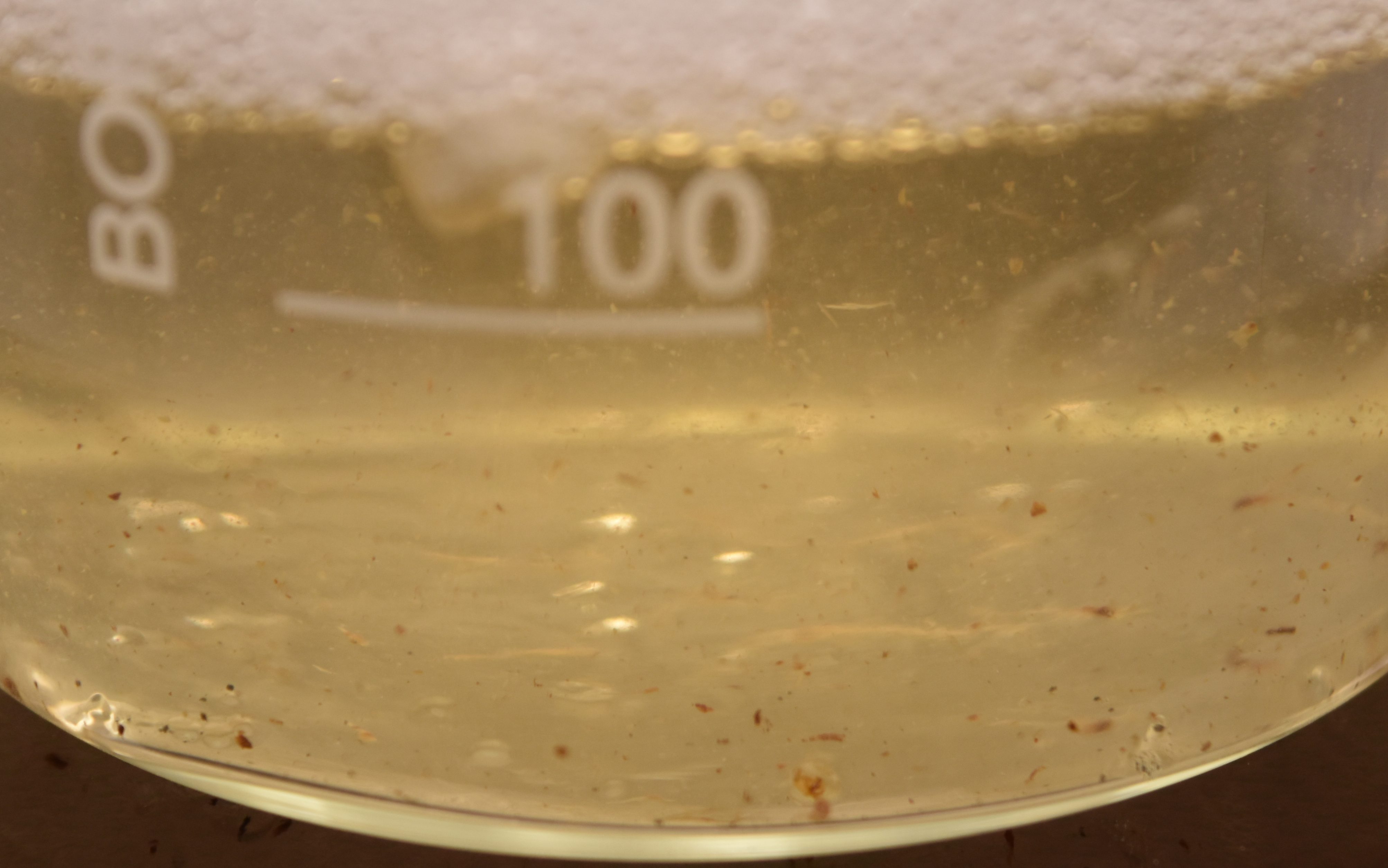
We noticed that in contrast to the powdered material purchased from the same supplier that we used for the manufacture of iron gall ink (part 2), the untreated lumps of gum arabic enclose small pieces of bark or other foreign material, which we decided to remove using a coffee filter.
By mixing the gum arabic solution with lamp black, an intensely black ink was created.
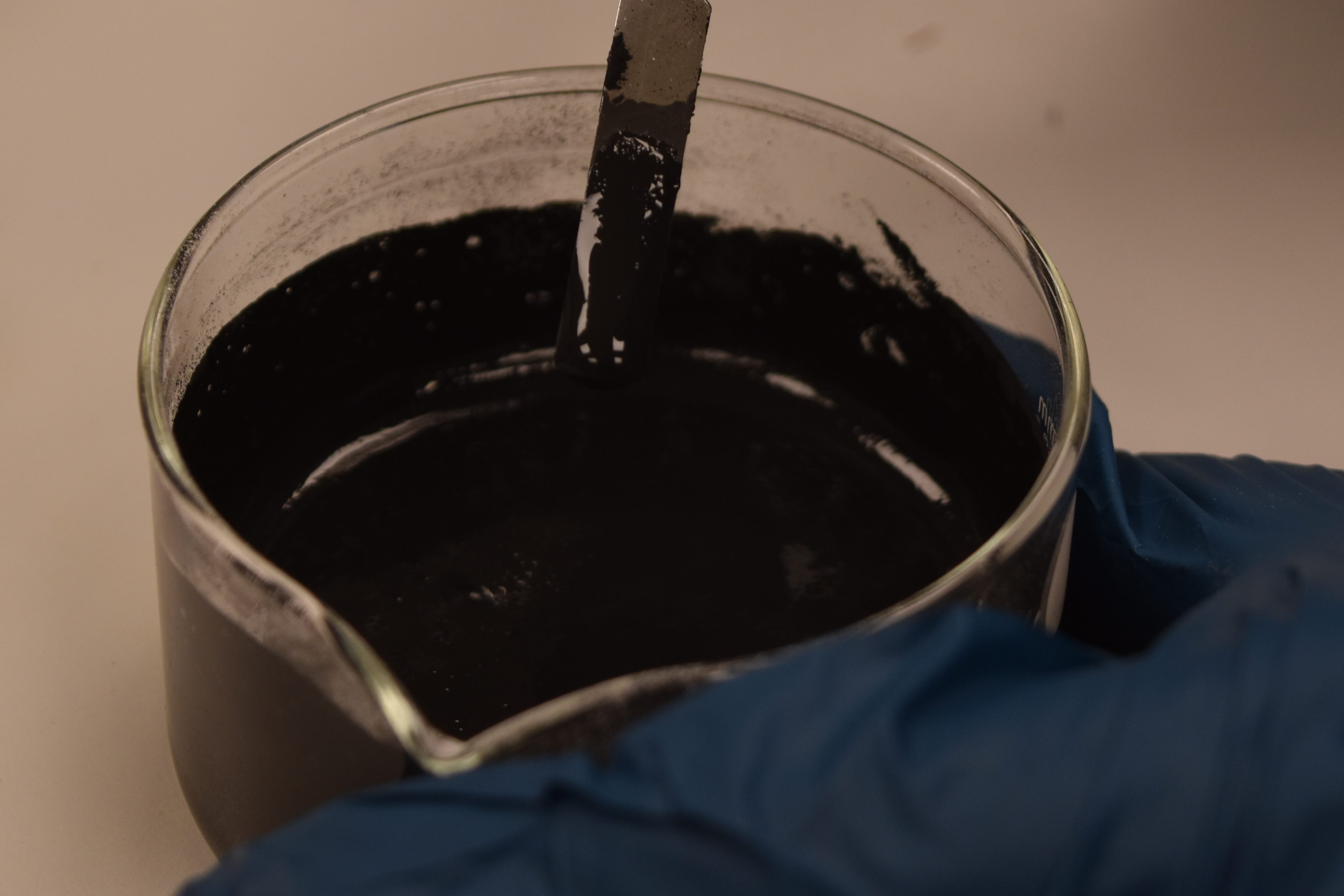
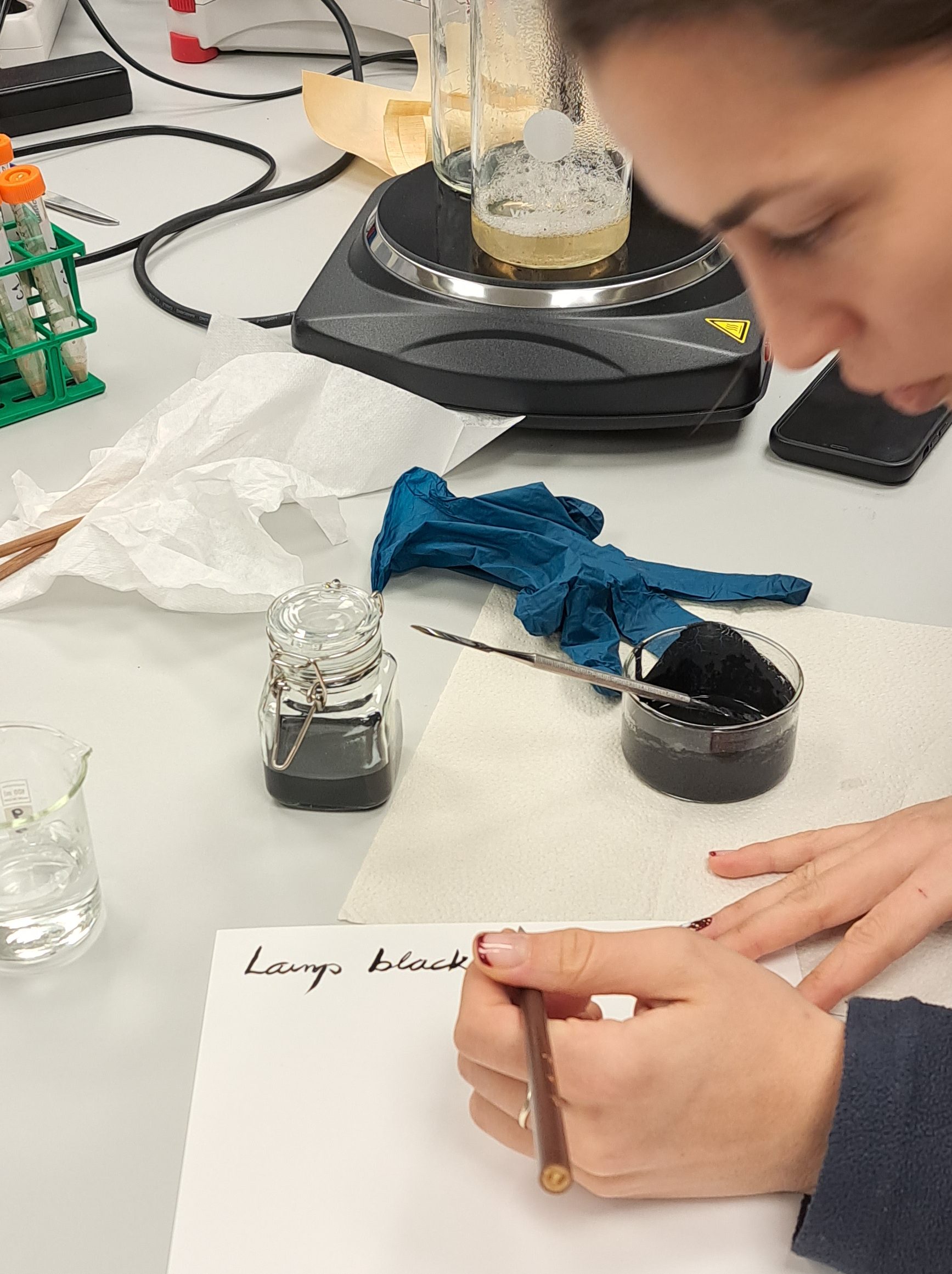
Finally, we used a commercially available red earth, consisting of a mixture of iron oxides (Terra Ercolano, Kremer pigmente, n. 41600) for the red ink. To produce our ink, we simply mixed the powdered mineral iron oxide with gum arabic and water.
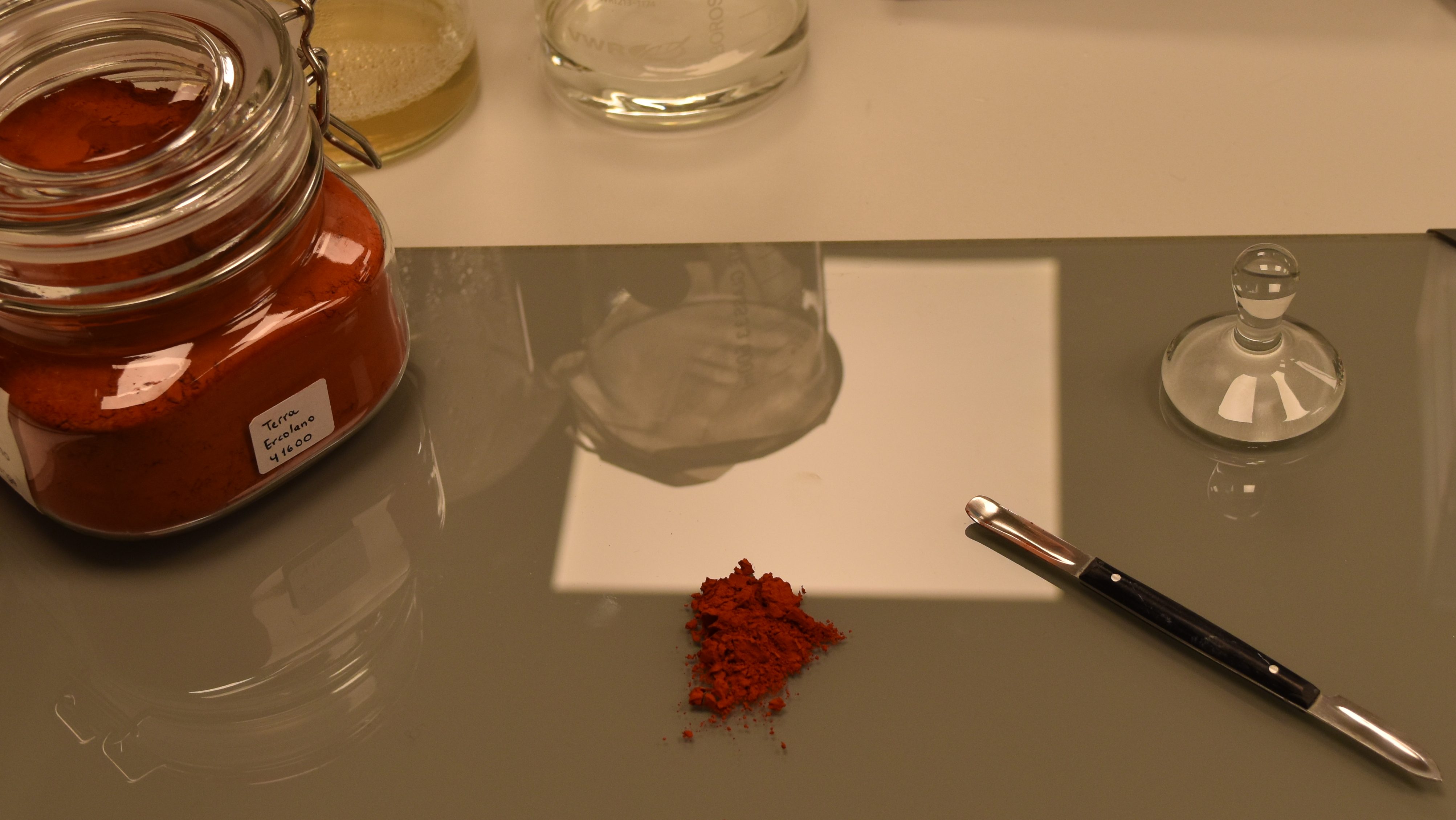
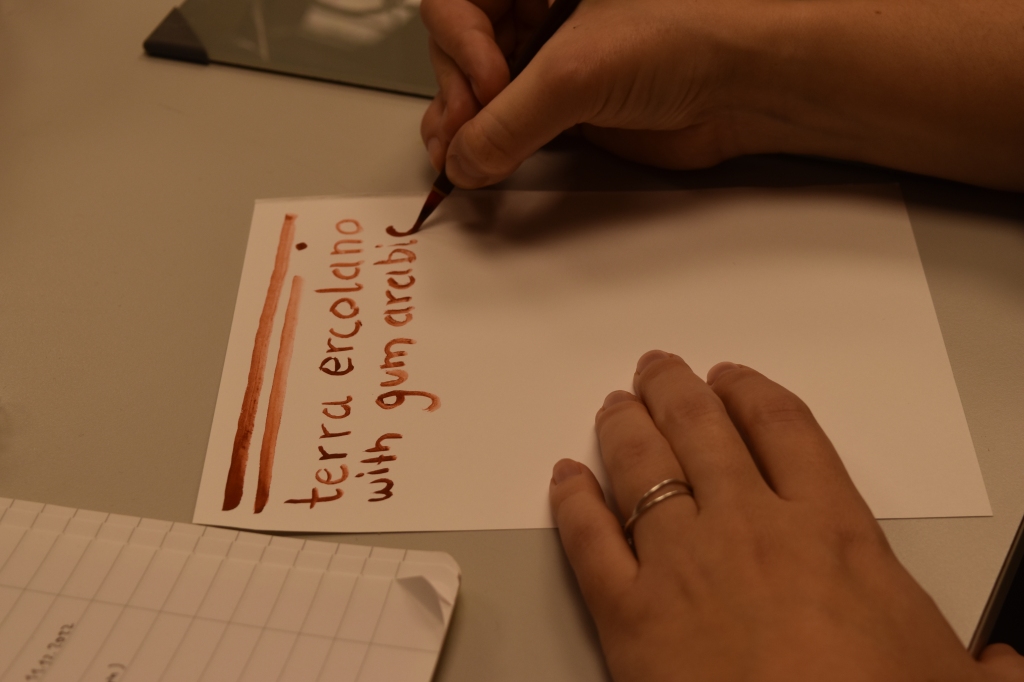
Hyperspectral imaging
Our mock-ups were now ready to measure!
The instrument we used was a portable hyperspectral scanner from Speccim IQ, covering the VNIR region. This was mounted on a tripod, and we made sure that the geometry was at around 45-degree angle.
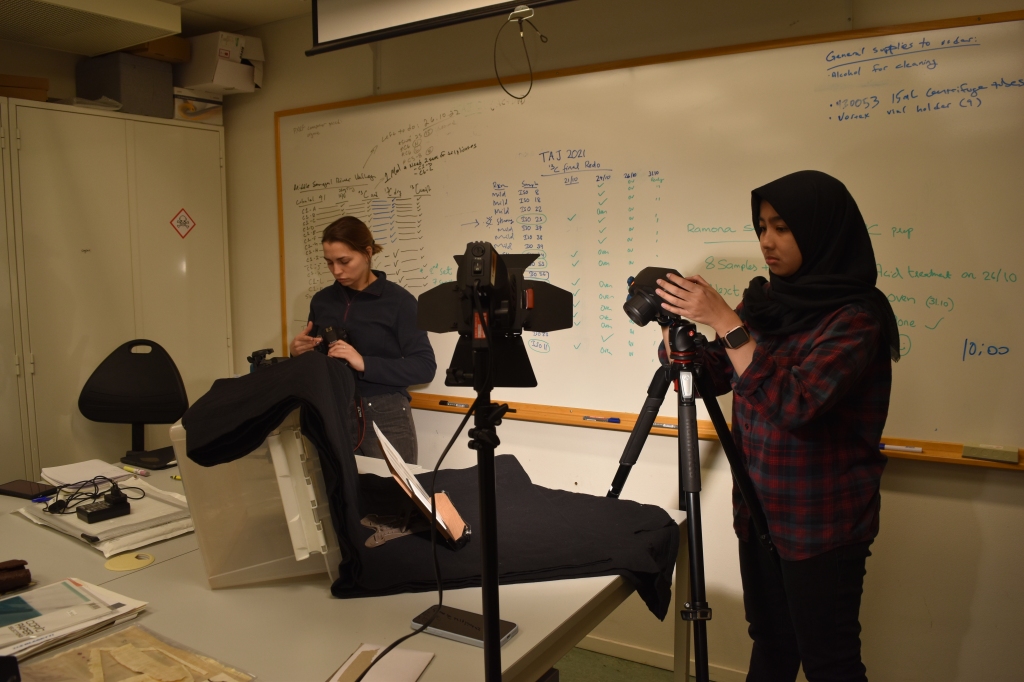
The light source was halogen lamp (200 watts) and the temperature rise was measured with the use of a thermal camera.

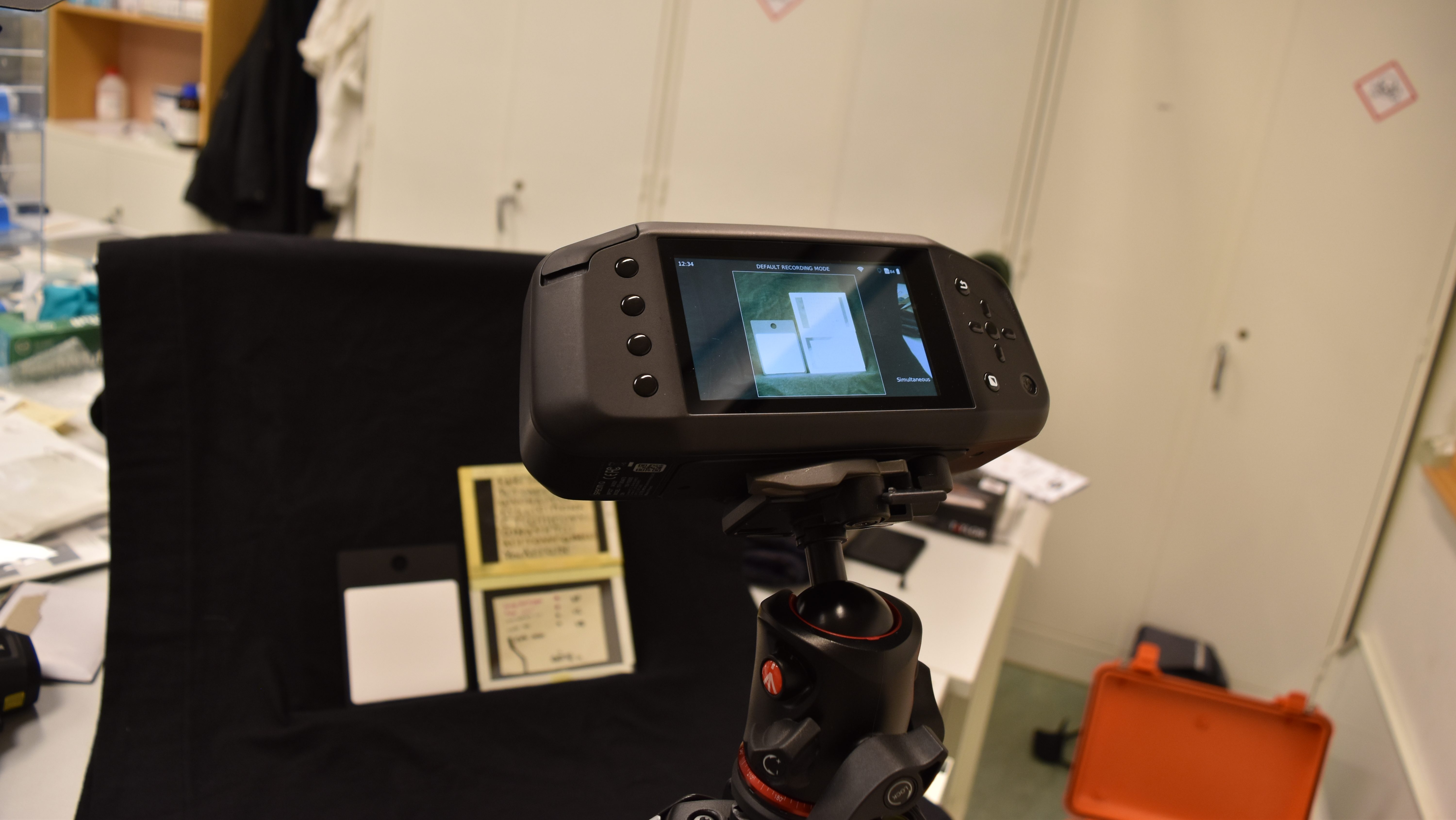
We are currently working on the first results and preparing the second phase of this study, which will include different types of glass.
Stay tuned for updates!
Many people contributed to this pilot study, whom we would like to thank:
- Hilda Debora and Riestiya (Tia) Zain Fadillah from the Colourlab (NTNU), who set up the hyperspectral imaging experiment.
- Anastasia Maravela (IFIKK, UiO) and Federico Aurora (UB, UiO), who kindly lend us spare glass frames.
- David Grimaldi (who is currently completing his MA thesis at IFIKK) and Despina Wilson (artist) were extremely helpful throughout the experimental session.
